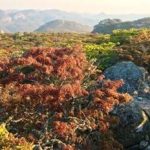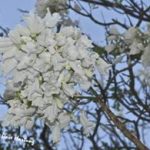TREE LIFE
482
October 2020
There is nothing to report on recent tree outings as we haven’t had any due to the ongoing Covid-19 pandemic. We just can’t visualise the time when normality returns and we are free to enjoy tree outings once again. However, people are starting to get a bit fidgety and no doubt, small groups of the keener botanists will venture out in the near future, that is, if they have not already done so! Any private excursions will not be organised by the Tree Society.
Mukuvisi Woodlands is seeing many visitors walking the trails over the weekends and this venue certainly is an excellent miombo destination for tree outings. Apart from 142 species of labelled trees in the Interpretive Area, there are a lot more different species to be seen on the trails. The list of the 142 labelled trees can be purchased at the Mukuvisi reception.
Tree Life 481 had an article by Meg Coates Palgrave on Farmer Managed Natural Regeneration (FMNR). This information came from a Power Point presentation which has since been updated with more information and animated to make it that more presentable. This presentation, albeit without animation, can now be seen on our Tree Society of Zimbabwe website under Odds & Sods. Here is the link: https://treesociety.org.zw/farmer-managed-natural-regeneration/
If you have a group of people who would like to see the animated presentation delivered by Meg, this can be arranged – just contact Meg.
TREE OF THE MONTH — THE SAUSAGE TREE
If there are charismatic species within the plant kingdom then the Sausage tree, Kigelia africana, is surely one of them.
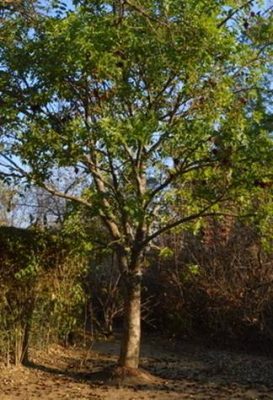
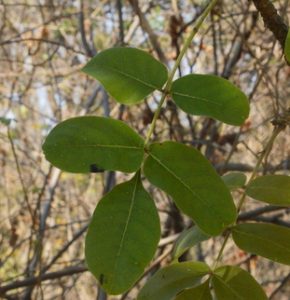
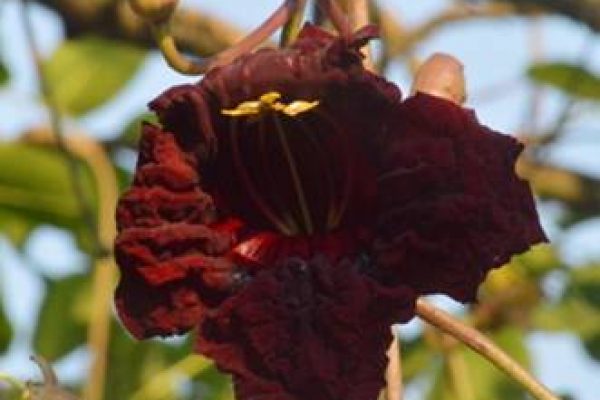
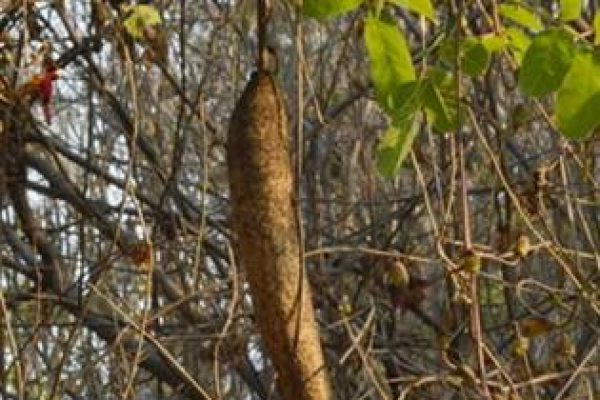
Each September the tree in our garden presents an amazing spectacle. Within just two weeks its bare branches are transformed into a crown of bright green leaves and wine-coloured flowers.
This month the flowering coincided with having to house-train a puppy, which required several trips outside in the evening. That’s when I noticed the startlingly fresh night-time fragrance of the Sausage tree. It wasn’t sweet, but nor was it unpleasant. Scientists have a name for it: chiropterophilous, that is, attractive to bats. But here’s the odd thing: recent research states that while there’s published evidence for bat pollination of K. africana in West Africa, there’s none in southern Africa. It could be a “lost mutualism”.
My Dad recalls camping beneath a Sausage tree along the banks of the Zambezi during a canoeing trip in the 90s. All night long bats visited the tree, and the flowers plopped down among the campers. Looking back, my Dad says it’s unclear whether the bats were feeding on the flowers or just using the tree as a feeding site. There is a difference.
Reay Smithers, in his book The Mammals of the Southern African Sub-region, says Peters’ Epauletted Fruit Bats, Epomophorus crypturus, are attracted to the Sausage tree because it has thin branches that can be easily clasped while they devour food gathered elsewhere. The tree’s thick foliage also gives them protective cover while they feed.
Bees visited the flowers too, but they didn’t touch the stigmas. Not a single bat was seen visiting the flowers, according to the team who published their paper last year in the journal Koedoe.
If birds have replaced bats as pollinators, seed dispersal — via that amazing sausage-shaped fruit — appears to be limited.
Hippos are known to eat the fruit, which might account for germination of Sausage trees alongside rivers. And Smithers says that black rhinos feed on them too, while baboons chew open the pods to get at the pith and the seeds.
But in the Kruger study, Sausage tree fruit placed beneath the trees and monitored by the scientists was left untouched, apart from the odd desultory sniff from a passing elephant.
“Dispersal limitation may be a part of the recruitment bottleneck,” the team wrote, noting a significant lack of young Sausage trees in their study area.
It’ll be a sad day if the only specimens that remain are the ones cultivated by man. After all, everyone has a story to tell about the tree.
Last year a Harare businessman I met told me how several years ago, on a visit to Mana Pools, he parked his brand new pick-up truck beneath a Sausage tree. During the night there was a loud clunk and in the morning he inspected the damage: a large dent in his shiny new bonnet.
He returned to Harare a wiser man having learned that falling sausage tree fruits, like falling coconuts, can be a serious hazard.
Ryan Truscott
TREE PLANTING OVER THE YEARS
I decided it would be good to give the background to the Serui garden. Jim and I lived here from 1980 until we were kicked off the farm in June 2001.
Serui Source Farm in Norton was purchased by my father, Ralph Palmer, in 1933. The source of the Serui river is on the farm.
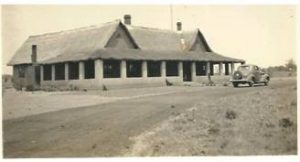
Water was essential and there was a well, the area was cleared as it had been a field of tobacco, which had had a bad infection of nematodes. So there were no trees. I often remember my mother sadly saying how she would have loved some Msasas in the garden, but she never considered trying to grow them.
Now it was important to plant trees, so with advice from friends they planted fast growing exotics: Toona ciliata, Jacarandas, a Syringa, Melia azedarach, a Delonix regia, the Flamboyant, a Pride of India, a circle of Poinsettias, Euphorbia pulcherrima round the drive in the front which measured a fifth of a mile.
They were spectacular in the winter when in full flower. Behind the house was a wind break of Eucalyptus grandis. They were home to a pair of Gymnogenes who raised their young there for many years. There was a misguided popular conception at that time that indigenous trees were slow growing and not worth planting. How very sad.
We moved to Serui in 1980, the Toona ciliatas were huge by then and gave lovely shade but a couple growing close to the house had large roots which were splitting the walls and lifting the foundations. So these had to be removed. We employed a tree cutter. He and his wife camped by the dam for a week and took out 8 of these large trees. We left one for shade by the patio and a large Jacaranda.
Over the years my mother had planted an Acacia nilotica which came from the Gibbs farm in Nymandshlovu, and a pod mahogany, Afzelia quanzensis. Eden Simon gave her a seedling in a small pot. It grew into a very handsome tall tree after nearly forty years; it was not branched like most specimens I have seen in the wild.
When we moved in, I wanted to fill the garden with indigenous trees, so I sourced trees where I could, some were bought from nurseries, Emerald Seedlings were good, Kerry Wallis was in charge and he and Tom Muller worked together. I grew some from seed, and was given some from friends.
Three Trichilia emetica came from a friend’s garden in Umboe, they had self seeded under her tree.
The seeds of Dovyalis caffra, the Kei apple came from Kirstenbosch, I planted them as a hedge and made many jars of tart jelly from the fruit. Also three Schotia brachypetala, came from Kirstenbosch – these grew very slowly. I was unable to water in the winter, but they finally flowered after 10 years. We had a Schotia growing in the vlei by the dam on an ant hill, a much bigger tree.
My sister gave me a Podocarpus sp. I kept it in a pot for a number of years. When I planted it in the garden it grew into a magnificent tree with low spreading branches. These made a great spot for hiding and children’s games.
A Dais cotinifolia flowered in January. An Albizia tanganyicensis came from the lowveld but was never very happy. I planted a Nyala tree, Xanthocercis zambesiaca, such a beautiful tree in its natural habitat, but it did not like my Highveld sandy soil! Nor did the Kirkia acuminata, or the Erythrina livingstoniana. Excoecaria bussei the pawnbroker tree, was slow but may have grown bigger. The Cordia africana struggled in the sandy soil. I planted a Marula, Sclerocarya birrea, this turned out to be a male so we had no fruit. I also had a small Rhamnus prinoides with shiny leaves growing in the shade.
Not long before we left I planted a Calodendrum capense. Behind the tennis court we planted a Bridelia micrantha, the autumn leaves would have been spectacular in a few years.
We had some interesting trees just outside the fence, a grove of Burkea africana, a Pterocarpus rotundifolia which flowered profusely every January for a short week. The snake bean tree Swartzia madagascariensis, the horn-pod tree Diplorhynchus condylocarpon and Acacia amythethophylla and Azanza garckeana the snot apple tree.
When Jim left the Forestry Commission as chairman he was given a Ginkgo biloba the maidenhair tree. This was very slow growing but may have done better on red soil where it was better watered.
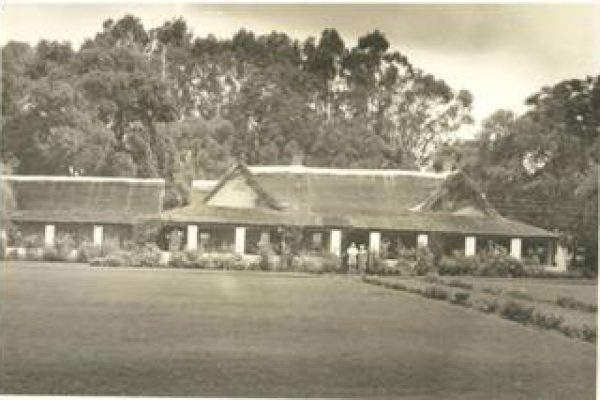
As you can imagine it was traumatic being kicked out of our home and farm. We were more fortunate than some and were able to pack up the house, but could not transport the trees.
I have never gone back though wonder about the trees, but understand that most trees near the barns have been felled to cure the war vets tobacco.
The house burnt down in a veld fire two years after we left.
Ann Sinclair
BRACHYSTEGIA SPECIFORMIS POLLINATORS
Brachystegia spiciformis occurs in savannah woodland throughout Zimbabwe, Malawi, Zambia and East Africa. It has racemes of small fragrant green flowers that attract a diversity of pollinators.
Its pollination has been extensively researched in the Arabuko-Sokoke forest on the coast of Kenya some 110km north of Mombasa. I am familiar with the forest because research work was conducted by my father. He was testing different tsetse fly attractants using traps. The forest with its diversity was a source of wonder and amazement. The biodiversity of the forest is large and even has rare mammal species.
The forest is now protected and commercialised because local people are allowed to gather honey. Bees are the main pollinators gathering either pollen in their pollen baskets or nectar. The bees communicate the source of nectar or pollen to the other workers in the hive by a dance using direction from polarised light. Karl von Frisch found that bees perform a waggle dance on the hive to alert other worker bees to the direction and distance of a source of food. It has been recently discovered by researchers at Bristol University that bees use their ability to see polarized light when foraging. Light reflected from downward facing flowers contrast with the skylight polarization patterns helping the bee to identify a specific flower.
Not only do bees communicate the source of food they can navigate and pinpoint a specific flower or flowers. Polarized light is caused by air molecules from the atmosphere scattering protons. This is one way directional and creates a highway of light. With this superior ability bees must be the main pollinators of Brachystegia spiciformis. The evidence is that in many areas honey is collected in abundance from where these trees occur. This is predominantly Miombo Woodland. The literature has references to collecting honey from wild and traditional hives in the Nilsa National Reserve in Mozambique, in coastal forest conservation in Tanzania and Kenya. There are references to Zimbabwe and Zambia. Wherever Brachystegia occurs, bees are the primary producers of honey.
The bee is the African variety of honey bee Apis mellifera scutellate. Stranger bees belonging to the Meliponini have also been recorded. Bee keeping also plays a role in the conservation of forests.
The main tree species of the Miombo Woodland are predominantly Brachystegia spiciformis, Julbernardia globiflora which are dominant. Other species are Pterocarpus angolensis and Albizia sp. The sequence of flowering amongst the trees and other flowering plants is staggered. Julbernardia flowers January and Brachystegia as late as August.
Bees with their communication, navigation and directional skills are well adapted for pollen and nectar collection. Butterflies are also pollinators. The main genus are the Charaxes recorded in Zimbabwe and Kenya in the Arabuko-Sokoke Forest.
Butterfly farming for the sale of pupae has generated income for families living in the area of the Arabuko-Sokoke Forest. As pollinators they too are considered to play an important role in the conservation of the forest.
After dark moths and bats play their role as pollinators and conservationists of the Miombo Woodland. Moths are attached to pale or white flowers. Brachystegia flowers are pale green with white stamens. The flowers are fragrant and have liquid nectar both prerequisite for the feeding of moths and bats. Moths especially hawk moths have a long proboscis for sucking up nectar.
Current research from Newcastle University has shown that moths pollinate a wide range of plants and that they work harder than their dayshift counterparts. They carry pollen on their furry bodies.
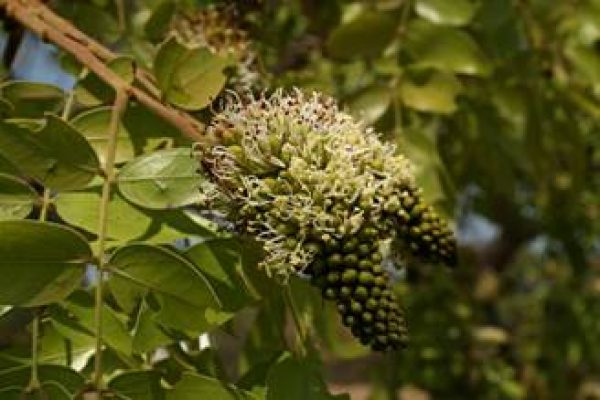
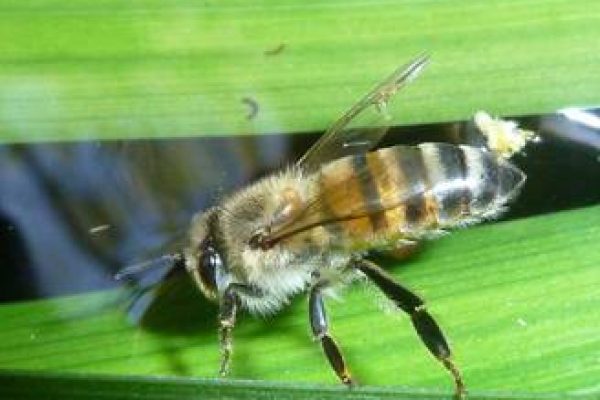
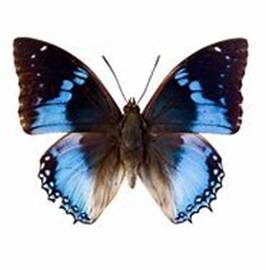
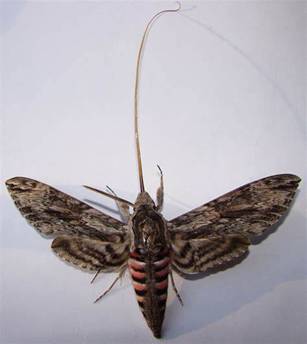
Note the long proboscis of a hawk moth. Moths have not been recorded pollinating Brachystegia and it may be because Miombo Woodland does not carry much pollen but then the study may not have been done. Studies involve setting up light traps and catching insects in a bucket. Moths and pollen can then be identified. This very recent work by the University of Newcastle has identified moths and the plants they visit. Estimates are that these moths under the hours of darkness are very busy indeed.
Tree Society Zimbabwe 279 refers to the msasa moth Pachymeta robusta caterpillars are found on both msasa and munondo. The caterpillars disperse at night to feed on young leaves. It is an assumption that these moths or other moths belonging to the family Lociocampideae which include the Lapped and Engler moths could be pollinators but there is no evidence of this in the literature. An article in the journal Nature states that the Microchiropteran bats play a role in pollination and seed production in the forest on top of Nichisi Mountain in Brachystegia Woodland Savannah.
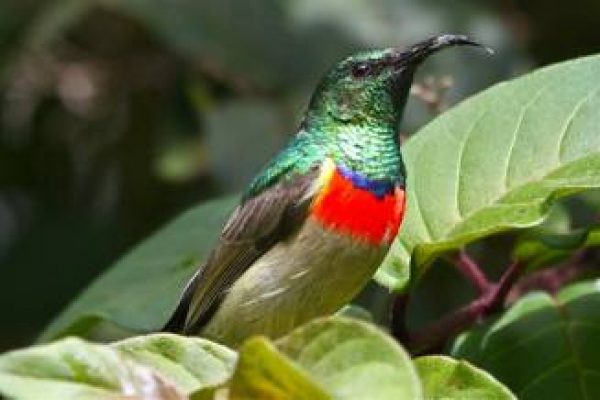
Sunbirds also play their role as pollinators The Amani sunbird in the Arabuku-Sokoke Forest is solely dependent on Brachystegia spiciformis flowers as it forages high up in the canopy. Bird parties of numerous bird genera can be heard in Miombo Woodland canopies and would be attracted to nectar and insects and they and the insects would be contributing to pollination. Beetles and ants have been recorded as pollinators.
Pollination should not be confused with fertilization. Pollination is the depositing of pollen on the stigma of the female part of the flower. The pollen tube grows down to fertilize the ovule and seeds are formed promoting the continuity of the species and the survival of the ecosystem.
The survival of the Miombo Woodland and Brachystegia in particular is dependent on many pollinators. These include butterflies, moths, bats sunbirds, flies and beetles. The major pollinator, the Western honey bee, uses polarized light and has great precision in nectar and pollen gathering. Others in, profusion, feed on nectar or are predators on other foragers all contributing to the viability of the woodland, A woodland that extends from South Africa, through Tanzania to the coastal region of Kenya.
Mary Toet
Chairman – Tony Alegria


